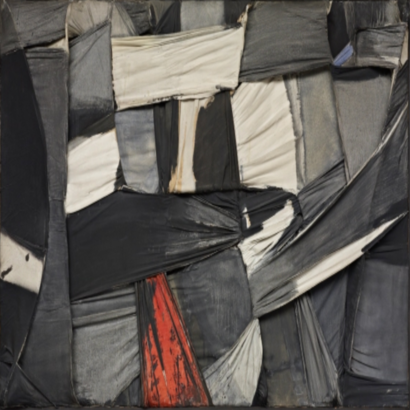Au cœur de l’abstraction, collection de la fondation Gandur pour l’art
In addition to the magnificent place that is the Maeght foundation which can accommodate large formats of the artists presented, Jean Claude Gandur emphasizes that "many of them are also in the Maeght collection. Among the works of these artists, some have passed through the gallery Maeght while others have even been acquired from it. This exhibition is therefore a kind of tribute to the work of the famous collector Aimé Maeght.
The angle of view is a selection of works reflecting a key period for abstraction stretching from 1945 to 1980 around 120 paintings and about fifty major artists.
Organized around nine thematic sections, the exhibition shows the evolution of non-figurative art and its different currents, from the 1950s to the end of the 1980s.
This collection of abstract art from the second half of the 20th century focuses on artists who are French or who worked in France.
To name but a few: Georges Mathieu, Sam Francis, Joan Mitchell, Victor Vasarely, Alexander Calder, Jean Tinguely, the Supports/Surfaces group, Pierre Soulages, Martin Barré, Simon Hantaï, Pol Bury, Jean Degottex, Lucio Fontana, Judit Reigl.
Let's put abstraction back into context: in the aftermath of the Second World War, "Paris outraged, Paris broken, Paris but Paris liberated", to quote General de Gaulle in 1944, regained its status as the world's cultural capital.
A process of freedom expressed by artists, many of whom had been exiled, who found their country in a framework of intellectual and artistic effervescence in the field of painting, sculpture, cinema or literature.
Abstract art was not born after the Second World War, of course, but it dominated the whole of the 20th century, breaking with traditional figurative art close to nature.
An abstract work does not de facto imitate reality, but by freeing himself from any link with reality, the artist can express his approach to the end without any limit.
This post-war period marks another turning point for abstract art, where artists will go further than their avant-garde compatriots of the first half of the twentieth century, by exploring the questioning through questioning the material, the supports, the techniques and the gestures.
Abstraction offers an infinite field of creation, "far from a figurative art considered as deviated by the totalitarian regimes" as Yan Schubert, curator of the Gandur Foundation for Art and curator of the exhibition At the heart of abstraction, reminds us.
Four decades are traced in a chronological course, and which highlights the research done: informal art, tachism, lyrical and gestural abstraction, abstract expressionism, geometric abstraction - and disputes of style (an abstraction called "hot", lyrical and gestural vs. a "cold" abstraction, more geometric)
A common denominator: paintings of great quality, which give an undeniable indication of the choice of a man whose collection sweeps across Mathieu's lyrical abstraction, Vasarely's geometrical abstraction, Calder's and Tinguely's kinetic works up to the works of the supports/surfaces group of which I am less fond, which questioned the traditional pictorial means, marking at the same time a conclusion to this period of intense experimentation and the beginning of an evolution which continues to this day
My point of view
A breathtaking exhibition that reflects the choices and bias of a collector who made no mistakes!
If our eyes are reassured by artists we are used to seeing, the interest lies in a perfectly successful dialogue between paintings that we might not have seen presented in this way: atypical paintings by Georges Mathieu from the 50's facing breathtaking Riopelle and I admit to having discovered certain artists such as Ernest Briggs, Jack Youngerman, Alfons Schilling, Jo Delahaut or certain Italian artists like Salvatore Scarpitta.
Here are the few favorites that I would retain from this exhibition:
Grand cachet by Arman produced with ink and gouache on paper mounted on canvas,
Agrafage (1961) by César, wooden strips stapled on panel
Opus 49 B (1953) of Gérard Schneider
Composition, 1950 by Jean Paul Riopelle
Meta Herbin, 1955, by Jean Tinguely
Composition en rose 1954 by Serge Poliakoff
A beautiful initiative of these two foundations which knew how to make available a part of our art history through the choice of a well-informed collector.
Elodie Couturier, expertisez.com
Youtube expertisez


